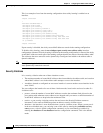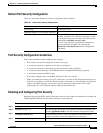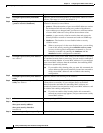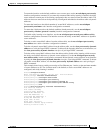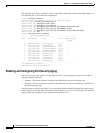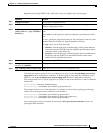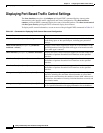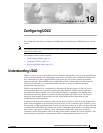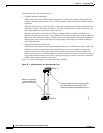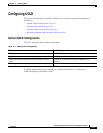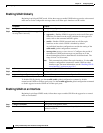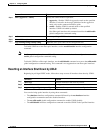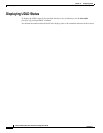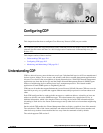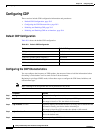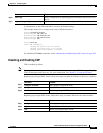
19-2
Catalyst 2950 Desktop Switch Software Configuration Guide
78-14982-01
Chapter 19 Configuring UDLD
Understanding UDLD
UDLD operates by using two mechanisms:
• Neighbor database maintenance
UDLD learns about other UDLD-capable neighbors by periodically sending a hello packet (also
called an advertisement or probe) on every active interface to keep each device informed about its
neighbors.
When the switch receives a hello message, it caches the information until the age time (hold time or
time-to-live) expires. If the switch receives a new hello message before an older cache entry ages,
the switch replaces the older entry with the new one.
Whenever an interface is disabled and UDLD is running, whenever UDLD is disabled on an
interface, or whenever the switch is reset, UDLD clears all existing cache entries for the interfaces
affected by the configuration change. UDLD sends at least one message to inform the neighbors to
flush the part of their caches affected by the status change. The message is intended to keep the
caches synchronized.
• Event-driven detection and echoing
UDLD relies on echoing as its detection mechanism. Whenever a UDLD device learns about a new
neighbor or receives a resynchronization request from an out-of-sync neighbor, it restarts the
detection window on its side of the connection and sends echo messages in reply. Because this
behavior is the same on all UDLD neighbors, the sender of the echoes expects to receive an echo in
reply. If the detection window ends and no valid reply message is received, the link is considered
unidirectional, and the interface is shut down.
Figure 19-1 shows an example of a unidirectional link condition.
Figure 19-1 UDLD Detection of a Unidirectional Link
TX
TX
RX
RX
Switch A
Switch B
Switch B successfully
receives traffic from
Switch A on this port.
However, Switch A does not receive traffic
from Switch B on the same port. UDLD
detects the problem and disables the port.
43583



